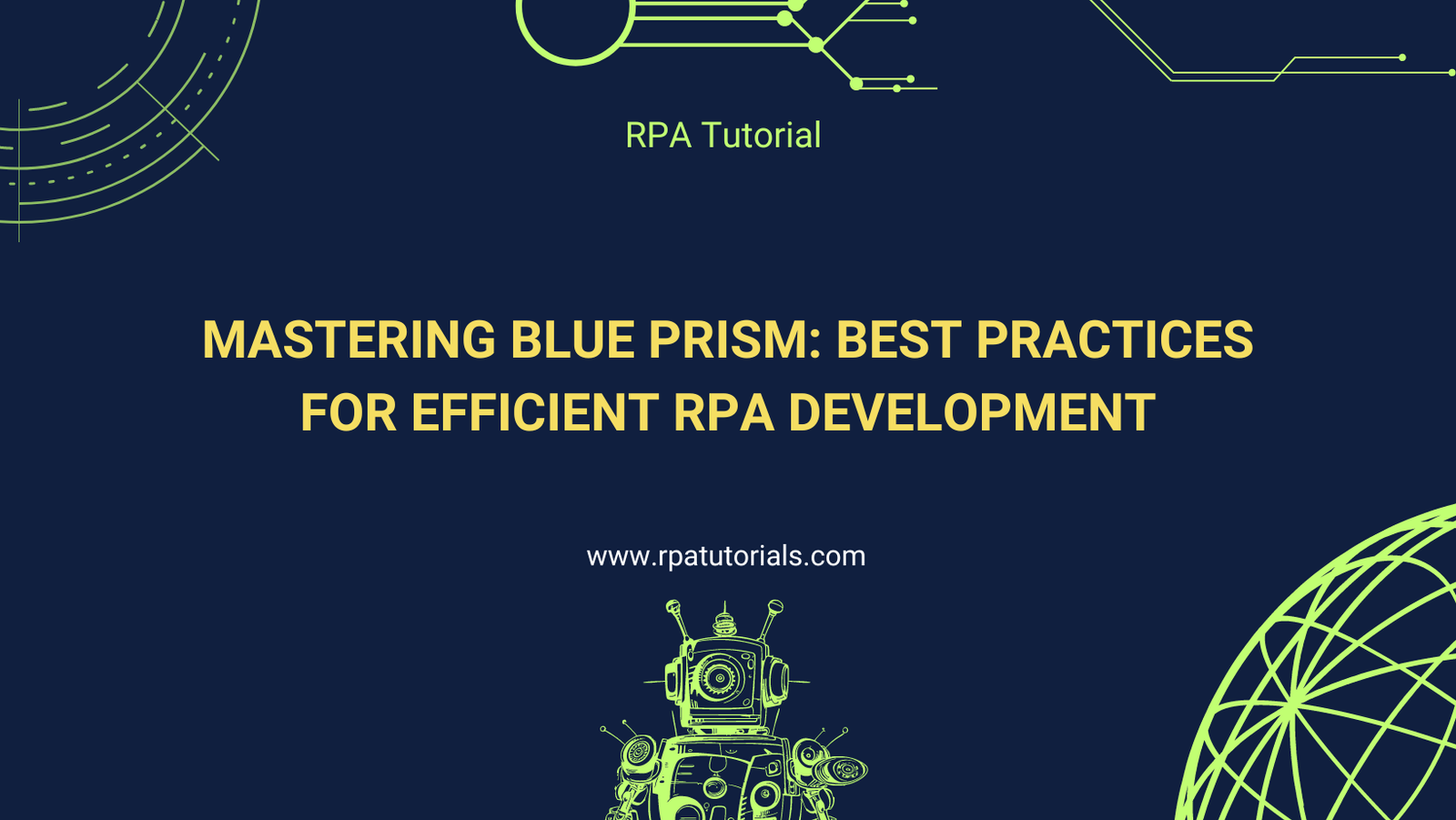Introduction
Blue Prism is one of the leading tools in the Robotic Process Automation (RPA) space, empowering businesses to streamline operations and reduce manual workload through automation. However, like any powerful tool, the key to unlocking its full potential lies in following best practices. In this blog post, we will explore essential tips and strategies for efficient Blue Prism development that will help you build robust, scalable, and maintainable automation solutions.
Table of Contents
- Modular Design
- Effective Exception Handling
- Reusability and Code Efficiency
- Comprehensive Testing
- Documentation and Version Control
- Security and Compliance
- Continuous Improvement
1. Modular Design
Modular design is a cornerstone of efficient Blue Prism development. Breaking down processes into smaller, reusable components not only makes your automation more manageable but also enhances scalability.
- Create Reusable Objects: Develop Visual Business Objects (VBOs) for common tasks like logging in to applications, data retrieval, and data entry.
- Use Sub-processes: Divide complex processes into sub-processes that can be tested and maintained independently.
2. Effective Exception Handling
Proper exception handling is critical to ensure your automation can handle unexpected events gracefully and continue to operate smoothly.
- Use Try-Catch Blocks: Implement try-catch blocks to manage exceptions at different levels of your process.
- Log Errors: Maintain detailed logs of errors to facilitate troubleshooting and continuous improvement.
- Graceful Recovery: Design your bots to recover from errors and continue execution when possible.
3. Reusability and Code Efficiency
Efficiency in Blue Prism development is about doing more with less. Reusability and code efficiency help you save time and resources.
- Standardize Actions: Create a library of standard actions that can be reused across different processes.
- Avoid Redundancy: Eliminate redundant steps and streamline your process flows for better performance.
4. Comprehensive Testing
Thorough testing is vital to ensure your automation performs as expected under various conditions.
- Unit Testing: Test individual components or sub-processes to catch issues early.
- Integration Testing: Test how different parts of your automation work together.
- User Acceptance Testing (UAT): Involve end-users in testing to ensure the automation meets business requirements.
5. Documentation and Version Control
Good documentation and version control practices are essential for maintaining and scaling your automation solutions.
- Document Everything: Maintain detailed documentation for each process, including its purpose, logic, and any dependencies.
- Use Version Control: Implement version control to track changes, manage updates, and collaborate with team members effectively.
6. Security and Compliance
Security and compliance are non-negotiable in RPA development, especially when dealing with sensitive data.
- Access Controls: Implement strict access controls to limit who can modify or execute your automations.
- Data Encryption: Use encryption to protect sensitive data both at rest and in transit.
- Audit Trails: Maintain audit trails to track who did what and when, ensuring compliance with regulatory requirements.
7. Continuous Improvement
RPA is not a one-and-done deal. Continuous improvement ensures your automations remain efficient and relevant.
- Regular Reviews: Conduct regular reviews of your automations to identify and address inefficiencies or changes in business processes.
- Feedback Loops: Establish feedback loops with end-users to gather insights and make necessary adjustments.
- Stay Updated: Keep up with Blue Prism updates and best practices to leverage new features and improvements.
Conclusion
Mastering Blue Prism development requires a combination of strategic planning, best practices, and a commitment to continuous improvement. By following these guidelines, you can create robust, scalable, and efficient automation solutions that drive significant value for your organization. Remember, the goal of RPA is not just to automate tasks but to enhance overall business efficiency and agility.
